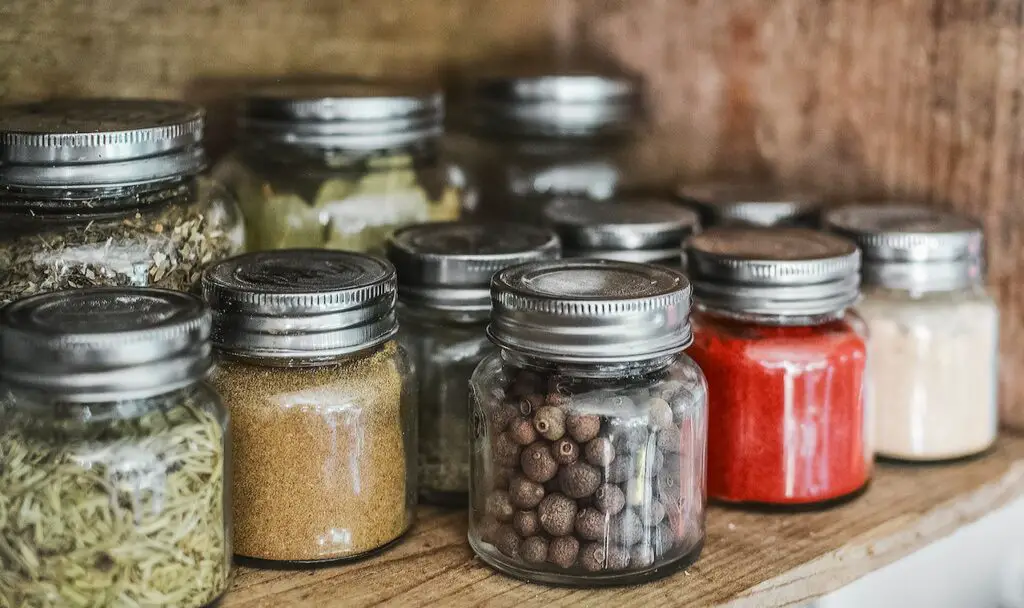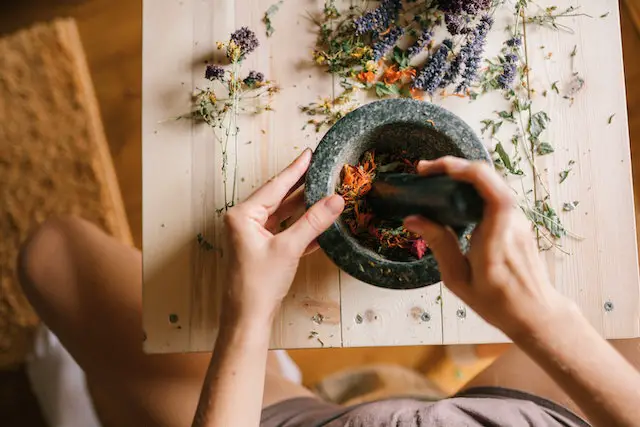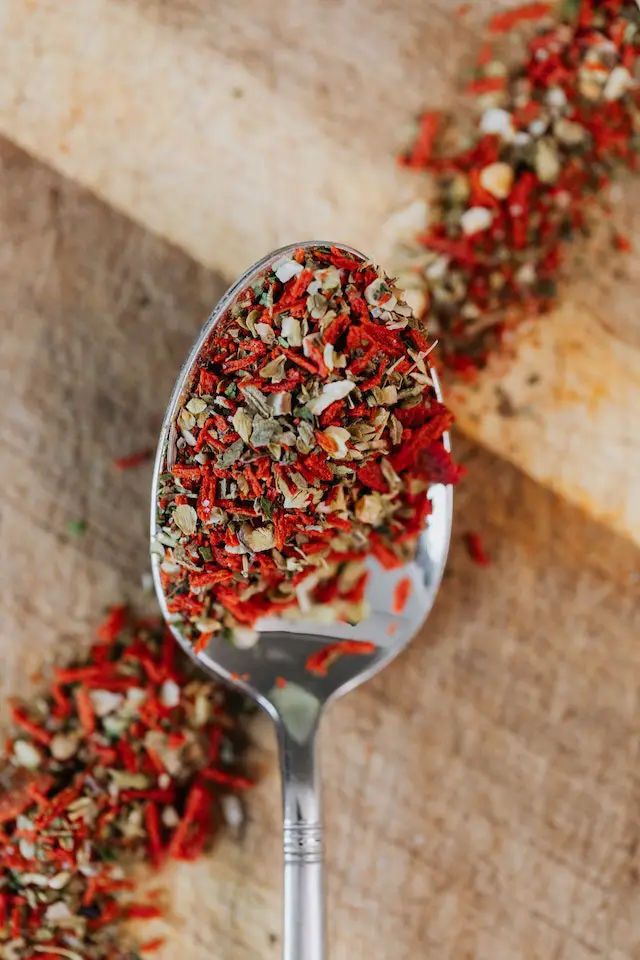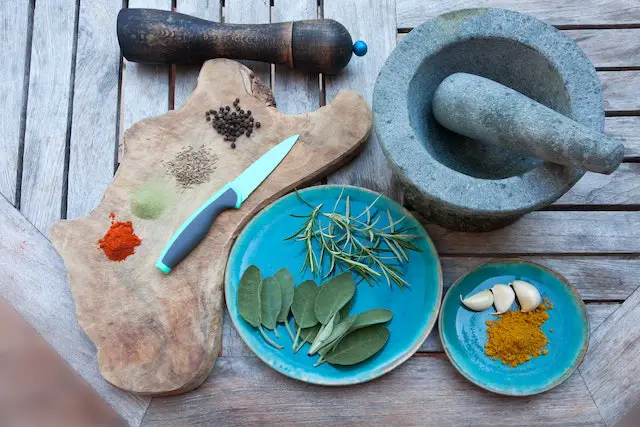What’s the best herbs and spices list for your next recipe? Spices and herbs are essential ingredients in cooking, adding layers of flavor and aroma that transform basic dishes into culinary masterpieces. With countless varieties available, it can be overwhelming to choose the right ones for your needs. This comprehensive guide covers the top 20 most popular and versatile spices and herbs that no kitchen should be without. We’ll explore their characteristics, health benefits, proper storage, and uses in cooking. Whether you’re a novice cook or a seasoned chef, this list has the must-have herbs and spices to inspire your next creation.
From earthy cumin to floral lavender, spices, and herbs offer a world of flavor. Understanding how to combine and use them can take your cooking to the next level. Read on to discover the top 20 essential herbs and spices to stock in your pantry!
Varieties of Spices and Herbs
Spices and herbs come from various parts of plants and trees. Spices are derived from the roots, stems, seeds, bark, or fruits, while herbs come from the leafy, green parts. Common spices include cinnamon, cumin, turmeric, and peppercorns. Popular herbs include basil, oregano, thyme, and rosemary. The array of flavors ranges from earthy and nutty, to floral, citrusy, and spicy. When used properly, spices and herbs can transform the taste of your cooking.
There are countless varieties of spices and herbs available. Having a well-stocked selection on hand allows you to experiment and find ideal pairings. Start with foundational spices like salt, pepper, and paprika. Then build your pantry with herbs like parsley, cilantro, and chives. Slowly expand into more exotic varieties to discover new flavors. A diverse spice cabinet will enable you to liven up everyday dishes.
Essential Herbs for Every Cook
Having a selection of the most versatile and commonly used herbs is essential for every home cook. These herbs provide the foundation for countless global cuisines and dishes. Keeping these fresh or dried herbs stocked in your kitchen will allow you to elevate the flavor of everything from soups and stews to grilled meats and savory baked goods. Start by acquiring some of the most essential, multi-purpose herbs below.
| Herb | Cuisine | Best: Fresh or Dried |
|---|---|---|
| Basil | Italian, Thai | Fresh |
| Oregano | Italian, Greek, Mexican | Dried |
| Cilantro / Coriander | Mexican, Indian, Thai | Fresh |
| Parsley | French, Italian, American | Fresh |
| Rosemary | Italian, French, American | Dried |
| Sage | Italian, British, American | Dried |
| Thyme | French, Italian, Greek | Dried |
| Mint | Indian, Middle Eastern, Thai | Fresh |
| Dill | Greek, Indian, Scandinavian | Fresh |
| Tarragon | French, Middle Eastern | Dried |
| Chives | American, French, Scandinavian | Fresh |
| Marjoram | French, Middle Eastern | Dried |
| Lemongrass | Thai, Vietnamese, Indian | Fresh |
| Bay Leaves | Italian, Indian, Greek | Dried |
| Chervil | French, European | Fresh |
| Lavender | French, Italian, British | Dried |
| Fennel | Italian, Indian, Greek | Fresh |
| Savory | French, Mediterranean | Dried |
| Chamomile | British, Middle Eastern | Dried |
| Lime Leaves | Thai, Vietnamese | Fresh |
How to Choose Spices and Herbs
When shopping for spices and herbs, look for brightness in color and aroma. Dull, faded spices will not provide much flavor. Seek out small batches if possible, as spices lose potency over time. For dried herbs, choose ones with vibrant, green color. For whole spices, opt for ones that appear dense and not shriveled up. Smell the spice or herb to ensure it has a strong, distinct aroma. If purchasing pre-ground spices, be sure they are not clumping together which indicates stale spices.
Also, pay attention to the location and origin of the spice or herb. Geographic region and climate affect the quality. For instance, Vietnamese cinnamon has a more complex flavor than cassia cinnamon. When in doubt, buy small quantities first to test the freshness and suitability for your cooking style. High-quality spices and herbs may cost more initially, but a little goes a long way in providing exceptional flavor.
Must-Have Spices for Every Kitchen
In addition to fresh herbs, having a versatile selection of dried spices is imperative for cooking delicious meals. These are 20 of the most common spices that every home cook should have in their pantry. Stock up on these essential spices to be able to flavor anything from curries and stews to baked goods and roasted vegetables.
| Spice | Cuisine | Ground or Whole |
|---|---|---|
| Cinnamon | Middle Eastern, Indian, American | Ground |
| Paprika | Hungarian, Spanish, American | Ground |
| Turmeric | Indian, Middle Eastern, Moroccan | Ground |
| Cumin | Indian, Middle Eastern, Mexican | Whole |
| Cayenne Pepper | Cajun, Mexican, Indian | Ground |
| Chili Powder | Tex-Mex, Mexican | Ground |
| Coriander | Indian, Middle Eastern | Whole |
| Curry Powder | Indian | Ground |
| Ginger | Asian, Middle Eastern | Ground |
| Nutmeg | Indian, Middle Eastern | Whole |
| Cloves | Indian, Middle Eastern | Whole |
| Cardamom | Indian, Middle Eastern | Whole |
| Allspice | Caribbean, Middle Eastern | Whole |
| Star Anise | Chinese, Vietnamese | Whole |
| Black Pepper | Global | Whole |
| Garlic Powder | Global | Ground |
| Onion Powder | Global | Ground |
| Smoked Paprika | Global | Ground |
| Fennel Seeds | Italian, Indian | Whole |
| Fenugreek | Indian, Middle Eastern | Ground |
With these essential dried spices on hand, you’ll be ready to add intense and complex flavors to a whole array of dishes.
How to Store Spices and Herbs

Proper storage is key to preserving the flavors and shelf life of spices and herbs. Store them in airtight containers in a cool, dark place away from light and heat. Exposure to air, light, and humidity will cause spices and herbs to lose potency faster. Keep them away from the stove, as heat will dissipate the essential oils. For whole spices like peppercorns or cumin seeds, use the original packaging or glass jars. For ground spices, transfer them to small reusable containers for optimal freshness.
Herbs and spice blends can be kept fresher by storing them in the refrigerator or freezer. Dried herbs maintain color and flavor best when kept in air-tight containers in a cool, dark place. Wrap fresh herb bunches loosely in paper towels and place them inside resealable plastic bags in the crisper drawer. Frozen herbs in oil or butter can be used straight from the freezer. Proper storage can prolong the shelf life of spices and herbs by months or even years. We also have a full discussion on dried vs fresh herbs.
How to Use Spices and Herbs
Spices and herbs should be added at different stages of the cooking process to fully develop their flavors. Whole spices can be dry roasted or tempered in oil at the start to release aromas. Ground spices tend to lose flavor with prolonged heating, so add them mid-way through cooking. Delicate herbs like cilantro and parsley should be sprinkled at the end to retain their freshness.
Start with a small amount of spice or herbs and adjust to taste. It’s easy to add more, but impossible to remove. For dry spices, bloom them in oil to intensify the flavor. For fresh herbs, chop finely or use whole leaves when possible. Combine multiple spices for complex layers of flavor. Let your intuition and palate guide you in using spices and herbs to season dishes perfectly.
Spices and Herbs for Health
Many spices and herbs contain beneficial compounds that contribute to good health. For example, turmeric has curcumin that acts as a natural anti-inflammatory. Cinnamon helps regulate blood sugar and lower cholesterol. Garlic and oregano have antioxidants that support the immune system. Ginger aids digestion while mint soothes stomach upsets.
Spices like cayenne pepper can temporarily increase metabolism and suppress appetite. Herbs such as thyme, sage, and rosemary have antimicrobial properties. Basil contains flavonoids that protect cell structures. As part of a balanced diet, incorporating more spices and herbs is an easy way to promote overall wellness. Their nutrients and phytochemicals offer protective and preventative health effects.
Culinary Uses for Spices and Herbs

Spices and herbs are incredibly versatile ingredients that can transform the flavor of any dish. Different varieties lend themselves well to certain cuisines and preparations. Here are some of the most popular uses for common spices and herbs:
| Spice/Herb | Common Uses |
|---|---|
| Basil | Tomato sauces, pesto, salad dressings, Italian food |
| Oregano | Pizza, pasta, grilled meats, Mediterranean cuisine |
| Cinnamon | Baked goods, oatmeal, coffee, curries, stews |
| Paprika | Stews, potato dishes, roasted vegetables, chicken, fish |
| Cumin | Chilis, tacos, curries, beans, Indian cuisine, Mexican cuisine |
| Thyme | Soups, eggs, chicken, breads, stews, roasted vegetables |
| Chili Powder | Meats, chilis, taco seasoning, Tex-Mex dishes |
| Rosemary | Chicken, pork, potatoes, breads, roasted meats |
| Curry Powder | Curries, stews, roasted vegetables, Indian cuisine |
| Cayenne | Chilis, hot sauces, stews, Cajun cuisine |
| Garlic | Almost any savory dish – meats, sauces, sautéed veggies |
| Ginger | Stir fries, marinades, teas, baked goods |
| Cloves | Baked ham, desserts, mulled wine, Indian cuisine |
Herbs like basil, oregano, and thyme are perfect for infusing Mediterranean flavors. Spices like cumin, coriander, and turmeric are essential for making Indian curries. Cinnamon brings warmth to baked goods and coffee. Understanding the common uses for each spice and herb helps you master combinations and regional cuisine. Start with foundational flavors, then expand your repertoire as your confidence grows. A world of flavors awaits!
Spice Blends
Pre-made spice blends provide complex layers of flavor with ease. They combine multiple spices and herbs into convenient mixes for various cuisines and dishes. Preparing your own blends will yield a better-tasting product as your spices will be fresher. Here are some popular blends to try:
| Blend | Spices/Herbs Used | Culinary Uses |
|---|---|---|
| Italian Seasoning | Basil, oregano, rosemary, thyme | Pasta, pizza, tomatoes, grilled meats |
| Herbs de Provence | Savory, fennel, basil, thyme, lavender | Grilled meats, stews, roasted vegetables |
| Ras el Hanout | Cumin, coriander, cinnamon, nutmeg, ginger | Tagines, chicken, fish, couscous |
| Garam Masala | Cumin, coriander, cardamom, cinnamon, cloves | Curries, lentils, roasted veggies |
| Chinese Five Spice | Star anise, fennel, cinnamon, cloves, Sichuan pepper | Stir fries, noodle dishes, roasted meats |
| Pumpkin Pie Spice | Cinnamon, ginger, nutmeg, allspice, cloves | Pumpkin pies, cookies, breads, oatmeal |
| Jerk Seasoning | Thyme, allspice, garlic, onion, habanero | Chicken, fish, shrimp |
| Taco Seasoning | Chili powder, cumin, onion, garlic, oregano | Tacos, burritos, Tex-Mex dishes |
| Curry Powder | Coriander, turmeric, cumin, fenugreek, chili | Curries, stews, grilled meats |
You can also make your own signature blends. Start with foundational spices like salt, pepper, and paprika, then layer on herbs, seeds, roots, or peppers. Make large batches to have on hand for easy flavoring. Toss blends with veggies or proteins before roasting or grilling. Blend ahead and store in airtight containers.
Herbal Blends

Herbal blends combine various dried herbs to create robust flavor profiles. They can be used to infuse oils, vinegars, butters, rubs, and more. Here are some classic and creative herbal blends to try:
| Blend | Herbs Used | Uses |
|---|---|---|
| Fines Herbes | Parsley, chervil, chives, tarragon | Salad dressings, omelets, chicken, fish |
| Bouquet Garni | Thyme, parsley, bay leaves | Soups, stews, stock |
| Chili Lemon Blend | Lemon verbena, lemon thyme, lemon basil | Seafood, poultry, salad dressings |
| Tea Blend | Mint, lemon balm, hibiscus, chamomile | Hot and iced tea |
| Italian Herb Blend | Oregano, marjoram, basil, thyme, rosemary | Pizza, pasta, tomatoes |
| Herbes de Provence | Thyme, savory, fennel, basil, lavender | Roasts, grilled meats, stews |
| Tex-Mex Blend | Oregano, cumin, chili powder, garlic, cilantro | Tacos, salsa, guacamole |
| Chimichurri | Parsley, oregano, garlic, vinegar | Steak, grilled meats |
| Greek Blend | Oregano, mint, rosemary, thyme, dill | Tzatziki, chicken, grilled meats |
Make your own dried herb combinations to have on hand and adjust them to suit your taste preferences. Use them to infuse vinegar, oils, butter, or sauces. Add herbal blends to meat rubs or sprinkle them into soups, stews, and grains. Get creative with blending herbs to make signature mixes.
Conclusion
Spices and herbs are invaluable for cooking flavorful, healthy meals. Having a diverse selection allows you to add depth, complexity, and aroma to any dish. Proper storage helps maintain freshness and potency. With practice, you can combine spices and herbs to unlock new dimensions of flavor. Start with foundational varieties, then expand your pantry as your palate grows more adventurous. The possibilities are endless when cooking with spices and herbs!

